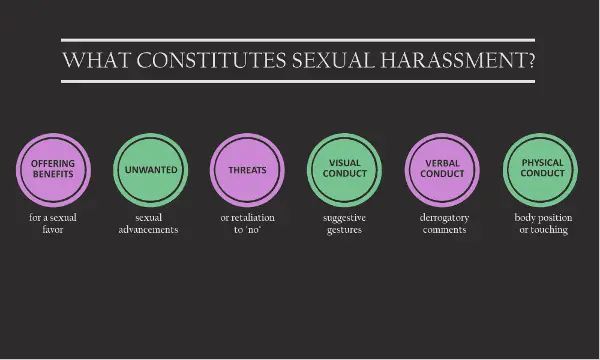
Sexual harassment is never a pleasant topic to deal with, but we must tackle this workplace hazard decisively. Harassment in the workplace will not stop on its own – it’s up to all of us to fight against it. We cannot be complacent bystanders and expect our workplace cultures to change themselves. A recent social media trend has opened many people’s eyes to the prevalence of sexual harassment in our society, and it’s worth taking a look at this important issue again.
In 1980, the EEOC issued guidelines declaring sexual harassment a violation of Section 703 of Title VII. It also established criteria for determining when unwelcome conduct of a sexual nature constitutes sexual harassment, defined the circumstances under which an employer may be held liable, and suggested affirmative steps employers should take to prevent sexual harassment.
Despite Title VII’s passage over 50 years ago and the subsequent amendment in 1980, sexual harassment continues to be a serious issue in the workplace. Last year alone, the EEOC received almost 13,000 sexual harassment charges. Additionally, it is estimated that up to three-quarters of victims do not report harassment to their employer for fear of retribution or termination.
What is Sexual Harassment?
Sexual harassment is unwelcome sexual advances or conduct of a sexual nature. Sexual harassment can cover a broad spectrum of behaviors from persistent, offensive sexual jokes to posting offensive material on a bulletin board.
Did you know?
- A victim of sexual harassment may be a woman or a man.
- The harasser does not have to be of the opposite sex.
- A victim can be anyone affected by the offensive behavior.
What Can I Do?
If you find yourself the victim of harassment, the biggest question on your mind is, “What do I do about it?”
Speak Up: The first thing you should do when faced with harassment is to speak up. Talking to your harasser can be difficult, especially if they are in a supervisory position.
Talk directly with your harasser and tell them what they’ve done to offend you. Be specific. Be serious, straightforward, and blunt. Hold the harasser accountable for their actions and demand the harassment stop. Don’t make excuses, and don’t pretend it didn’t really happen. Don’t respond to the harasser’s excuses or diversionary tactics. Say what you have to say, and repeat it if necessary.
Document Harassment: Documenting harassment is important if you need to take your complaint to your supervisor, union representative, or Human Resources. Here are some ways to document harassment:
- Photograph or keep copies of offensive material in the workplace.
- Keep a journal with detailed information on instances of sexual harassment. Note the dates, conversation, and frequency of offensive encounters.
- Tell other people, including personal friends and
co-workers. - Obtain copies of your work records, including performance evaluations, and keep these copies at home.
Follow Procedures: Your employer’s sexual harassment policy should outline reporting procedures. If you don’t know the procedures complaints in your workplace, you’re not alone. Nearly 70% of workers aren’t aware of their employer’s harassment policies. In most cases, you’ll go to a supervisor or the HR department.
Remember, you don’t have to suffer in silence.
For Sexual Harassment Training for your workplace, visit us at www.hardhattraining.com.
For information on how to report sexual harassment, visit eeoc.gov.
